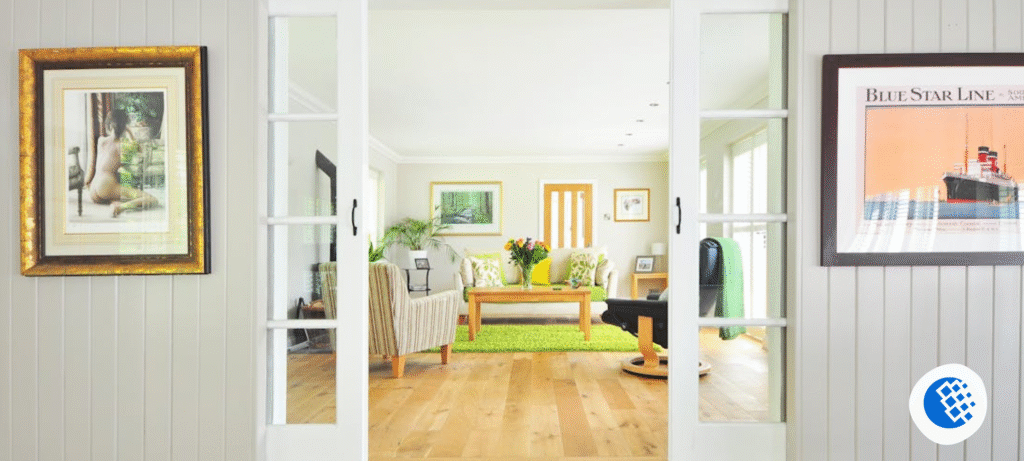Ever feel like your home doesn’t fit your life anymore? What once worked – like a cozy kitchen or unused spare room—can suddenly feel off when life changes. More people at home, new routines, and shifting priorities make a big difference. The pandemic only sped this up, turning dining rooms into classrooms and closets into offices. It showed that homes need to adapt. Flexibility and durability aren’t just nice to have – they’re essential.
In this blog, we will share how to design, update, and care for your living space so it continues to support your needs year after year, no matter how life shifts around you.
Start With What Actually Changes
The way we live changes over time—new jobs, growing families, shifting needs. Instead of trying to predict it all, make space flexible. Your living room might work now, but life could call for more separation or new uses later. Avoid locking rooms into one role. Use adaptable furniture, movable shelves, and smart storage. And think beyond decor. Structural features like open layouts and wide entryways make it easier for your home to adjust without constant renovation.
And don’t ignore the outside of your home. It may not change as often as the inside, but it does carry the weight of protecting everything you’ve built. A solid structure matters just as much as layout. That’s why when big updates are needed, like repairs to your roof or foundation, it’s worth working with a trusted roof replacement contractor. Skipping or delaying those fixes often leads to bigger problems that make it harder to adjust your space later on.
Design With Durability and Personality
A growing home isn’t just functional. It’s personal. And personal doesn’t have to mean trendy. It should reflect how you live.
Durability doesn’t mean your space has to look boring or industrial. You don’t have to live inside a concrete bunker to avoid damage. You just have to be honest about what your space goes through daily. Have a dog? Pick scratch-resistant floors. Have kids? Avoid white couches. Like to cook? Skip open shelving if you don’t actually enjoy styling your plates like a food blogger.
Design choices become long-term assets when they match your habits. Quartz countertops may cost more up front, but if you bake every weekend or host friends regularly, that investment pays off. The same goes for finishes that clean easily or fixtures that don’t need constant repairs.
You can also build personality into your space with color, art, and lighting—things that are easier to swap out as your style evolves. Start with a neutral base, then layer in statement pieces. That way, as your preferences shift (or your budget does), you don’t feel stuck with something that no longer fits.
The same logic works outdoors. Build a deck you’ll actually sit on. Choose plants you won’t forget to water. Create shaded areas that let you enjoy your yard even in July. A yard that’s only pretty but totally unusable isn’t really part of a growing home – it’s just decoration.
Storage Isn’t Boring. It’s Survival.
If you’ve ever found yourself playing Tetris with your closet or hunting for lost items in a sea of clutter, you already know this: good storage makes life easier. And as your household grows—whether by people, pets, hobbies, or gear – you’ll need more of it.
But not just more space. You need smarter systems. A giant closet that turns into a black hole isn’t helpful. What you want are zones. Think drawer dividers, labeled bins, wall-mounted organizers, and cabinets with pull-out trays. Every inch counts when you’re trying to live well in a space that isn’t getting any bigger.
Look for vertical opportunities, especially in small rooms. Tall shelving can double your storage without eating up floor space. Under-bed storage is great for seasonal items or extra bedding. And don’t forget the garage or basement. Just because a space isn’t pretty doesn’t mean it can’t be useful.
One key rule: don’t keep what you don’t use. A growing home only works if you’re honest about what actually supports your lifestyle. That means regular edits. If you haven’t touched it in a year and it’s not sentimental, donate it or toss it. Your future self will thank you.
Comfort Matters More Than Fancy
Let’s be honest. A beautiful house that’s uncomfortable isn’t a home. And a home that doesn’t feel right won’t grow with you. Comfort isn’t about luxury. It’s about ease.
Start with air quality. Poor airflow can cause allergies, low energy, and general grumpiness. Use air purifiers if needed, open windows when weather allows, and keep vents clean. Temperature also matters. Zoned thermostats or portable AC units can help balance hot and cold spots.
Lighting plays a big role too. Bright overheads might work in the kitchen, but softer lighting in bedrooms and living areas creates a calmer vibe. Consider using dimmers or adding floor lamps to get the right mix.
Soundproofing helps more than you think. Thick curtains, rugs, and wall art help reduce echo. And if you’re building or renovating, adding insulation between rooms goes a long way—especially if you’ve got kids, roommates, or love a good midnight snack with loud crunching.
Comfort also means safety. Install grab bars in bathrooms if someone in your home is aging. Make sure stairs are well-lit. Use nonslip mats in kitchens and bathrooms. These aren’t flashy changes, but they keep your space livable and welcoming for everyone.
The Emotional Side of Change
As much as we talk about paint colors and storage bins, it’s worth saying: change is emotional. Letting go of a home, or even changing how it functions, can bring up a lot. It’s okay to feel attached to what was. But don’t let that keep you from building what you need now.
The best homes are layered with history and designed for the future. It’s not about chasing some perfect version of a house. It’s about making small, honest upgrades that support the life you want to live.
Sometimes, that means adding a second bathroom. Sometimes, it means making your doorways wider so a walker fits through. Sometimes, it’s as simple as repainting a wall or clearing a shelf. Growth doesn’t have to be dramatic to be meaningful.
So when you find yourself looking around and wondering why your house doesn’t quite work the way it used to, pay attention. It’s not failing you. It’s just waiting for you to help it catch up.





